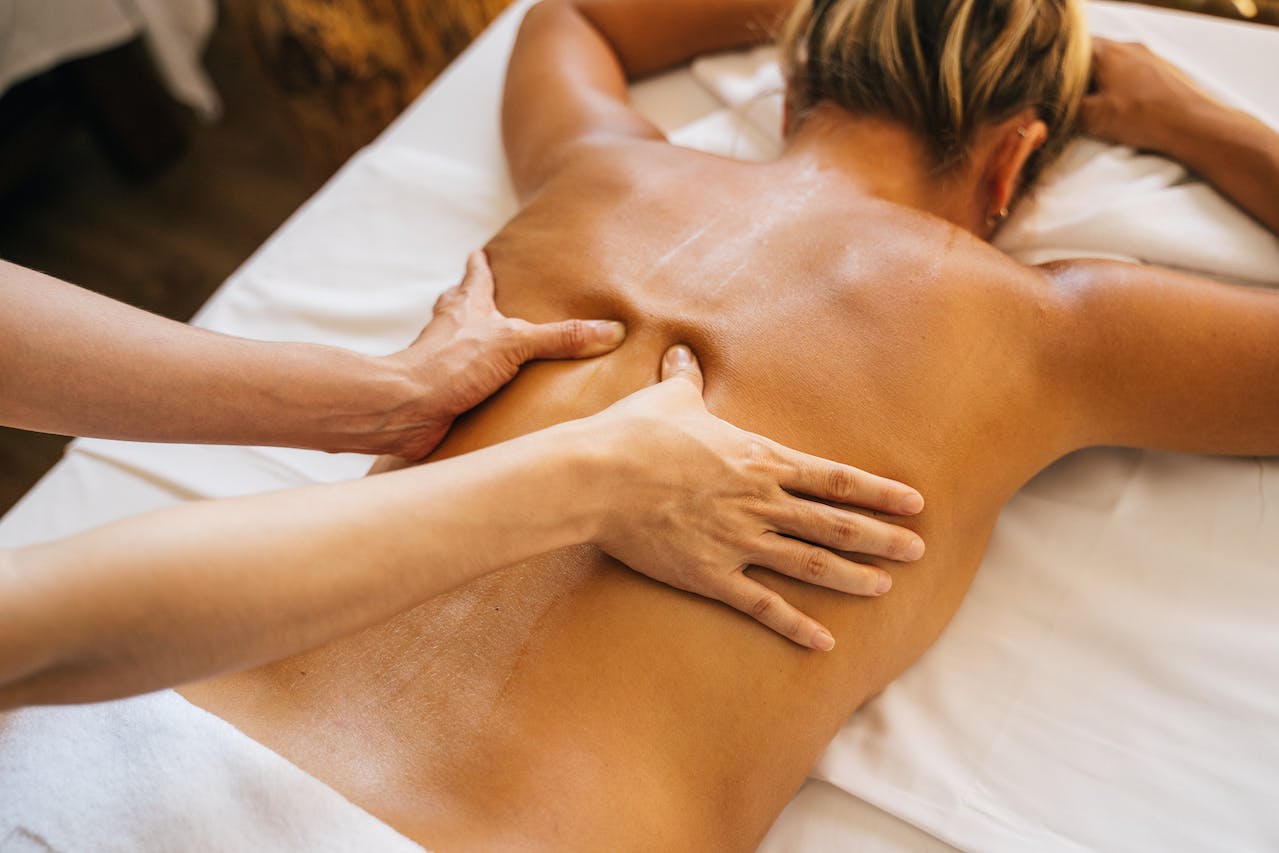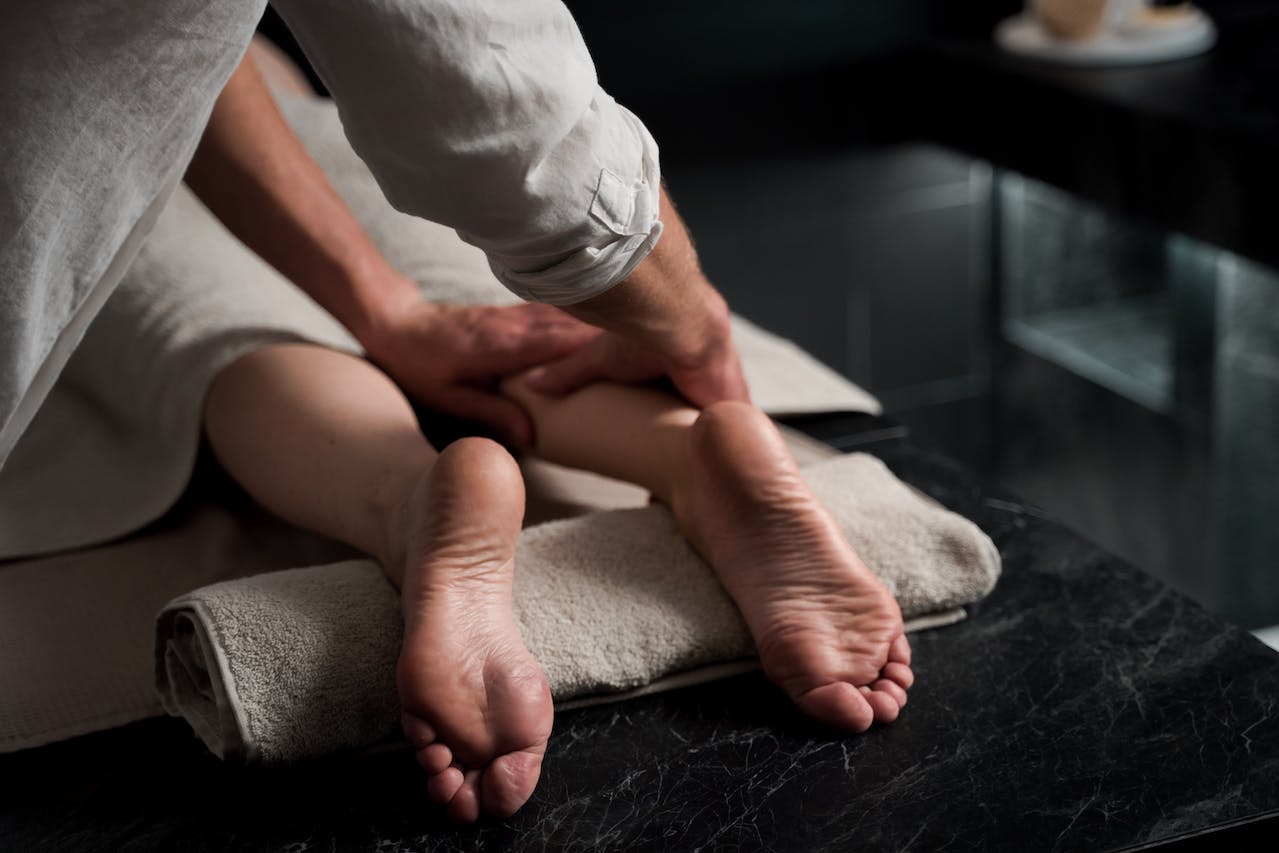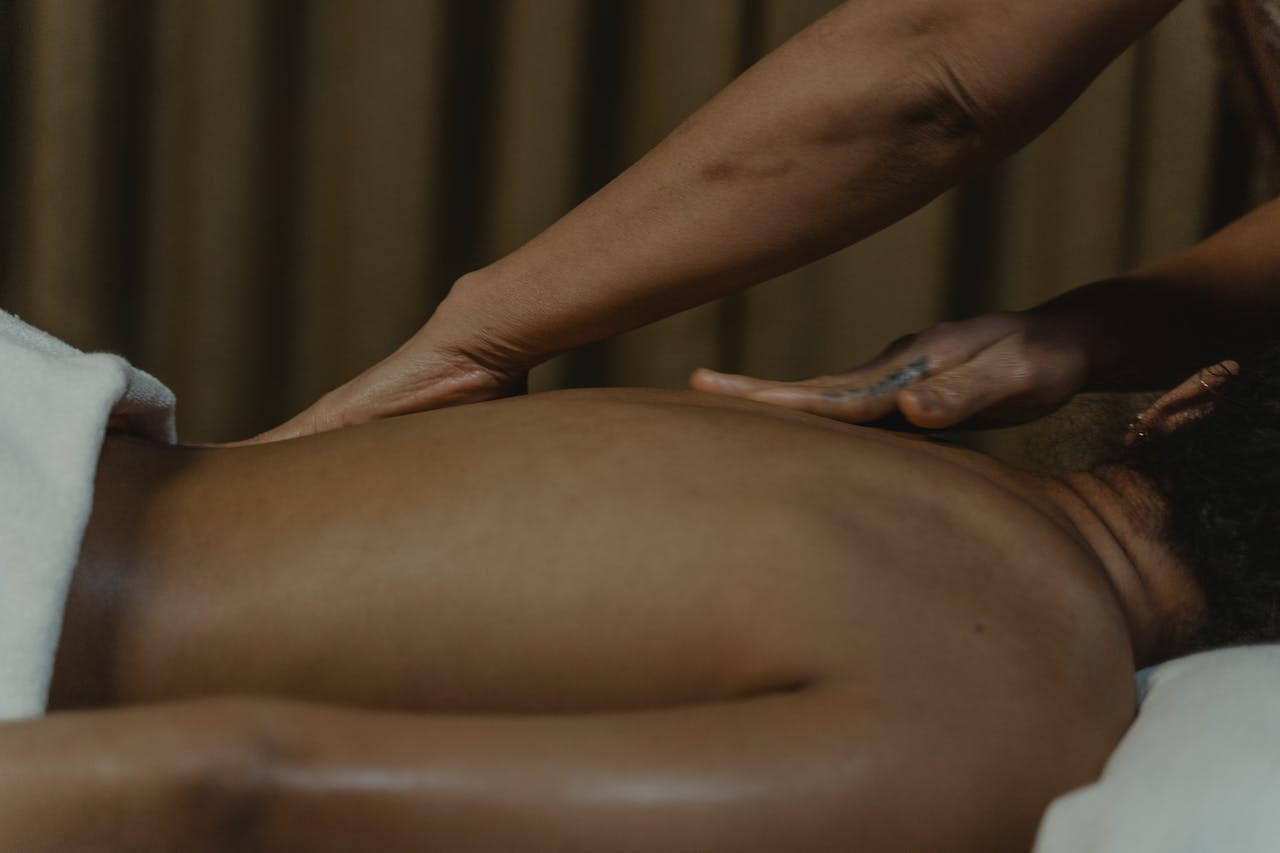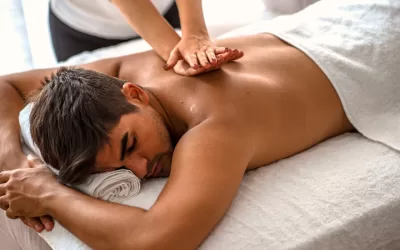How Tui Na Techniques Revolutionize Healing: Understanding Chinese Massage
Did you know that Tui Na, a form of Chinese manipulative therapy, has been used for over 2,000 years to promote healing and alleviate various health issues? This ancient practice involves specific techniques such as kneading, rolling, and deep pressure applied to acupressure points. Not only does Tui Na provide relief from physical discomforts like muscle tension and joint pain, but it also targets internal imbalances within the body.
The effectiveness of Tui Na lies in its ability to stimulate the flow of Qi (vital energy) through the body’s meridians. By promoting this harmonious energy flow, Tui Na facilitates natural healing processes while enhancing overall well-being.
Historical Perspective Of Tui Na
Ancient Origin
Tui Na, a significant component of traditional Chinese medicine, dates back over 2,000 years in ancient China. Its roots are deeply embedded in the rich history and culture of the country. The term “Tui Na” itself is derived from two Chinese words: “tui” meaning to push and “na” meaning to grasp or squeeze. This ancient healing technique was initially developed as a way to address various health issues by manipulating the body’s energy flow.
The practice has stood the test of time due to its efficacy in treating ailments through manual manipulation. Over centuries, Tui Na has been refined and adapted, integrating various massage techniques and theories that have contributed to its evolution as an effective therapeutic modality.
Integration Of Techniques
Initially focusing on basic principles such as pushing, pulling, kneading, tapping, pressing acupressure points along meridians (energy pathways), Tui Na has expanded its scope over time. It now includes a wide array of techniques such as rolling fist method for deep tissue massage and digital pressure for acupressure therapy.
This integration allows practitioners to tailor treatments according to individual people’s needs while addressing specific health concerns like musculoskeletal disorders or internal organ dysfunctions. The incorporation of diverse methods into Tui Na showcases how this ancient practice continues to adapt and grow with modern advancements in healthcare.
Understanding Chinese Tuina Massage
Manual Manipulation
Tui Na techniques revolutionize healing through manual manipulation. This involves using hands and arms to massage the soft tissue of the body, including muscles, tendons, and people. By applying pressure and kneading specific areas, Tui Na practitioners aim to stimulate the flow of Qi or vital energy throughout the body.
The focus on manual manipulation in Tui Na allows for a more targeted approach to addressing various health concerns. For example, if someone is experiencing muscle tension or pain in a specific area, such as the shoulders or lower back, a Tui Na practitioner can apply precise techniques to alleviate discomfort and promote relaxation.
Acupressure Integration
A key aspect that contributes to how Tui Na techniques revolutionize healing is its integration of acupressure. Acupressure involves applying pressure to specific points on the body’s meridian system to stimulate natural self-healing processes. In Tui Na, these acupressure points are strategically targeted during massage sessions to address imbalances in Qi flow and promote overall wellness.
By incorporating acupressure into massage treatments, Tui Na offers a holistic approach that goes beyond simply relieving physical tension. It taps into traditional Chinese medicine principles by targeting meridian points associated with different organs and bodily functions. For instance, pressing certain points may help alleviate digestive issues or improve mental clarity.
Stretching And Deep Tissue Massage
In addition to manual manipulation and acupressure integration, stretching and deep tissue massage are fundamental components that contribute to how Tui Na techniques revolutionize healing. These elements allow for comprehensive treatment of musculoskeletal issues while also promoting flexibility and improved circulation.
Through stretching movements incorporated into Tui Na sessions, individuals can experience enhanced joint mobility and relief from stiffness caused by prolonged sitting or physical exertion. Furthermore, deep tissue massage techniques utilized in Tui Na facilitate the release of chronic muscular tension by targeting deeper layers of muscle tissue.
Distinctive Methods In Tuina Massage Techniques
Stimulation Of Acupressure Points
Tui Na massage techniques involve the use of rolling, kneading, and pressing motions to stimulate acupressure points. By applying pressure to specific areas on the body, practitioners aim to promote relaxation, alleviate pain, and improve overall well-being. This targeted approach allows for a more focused treatment tailored to individual health concerns and imbalances.
The manipulation of acupoints during Tui Na sessions is based on the concept of Qi (pronounced “chee”), which refers to the vital energy that flows through the body along pathways known as meridians. By targeting these acupressure points, Tui Na aims to restore balance and harmony within the body’s energy system. For example, by focusing on different acupoints along the meridians associated with digestion or stress relief, practitioners can address specific issues such as indigestion or anxiety.
Versatile Techniques And Tools
Practitioners of Tui Na may employ various methods beyond traditional hand movements. In addition to using their palms and fingers for manipulation, they might also utilize their elbows or even specialized tools during sessions. These additional tools allow for a broader range of pressure techniques and can provide more intense stimulation when necessary.
For instance, some practitioners incorporate cupping, a technique where suction cups are placed on the skin to create a vacuum effect that helps release tension and promote blood flow in specific areas. This versatility enables Tui Na therapists to customize treatments according to each individual’s unique needs.
Tailored Treatment Approaches
One notable feature of Tui Na massage techniques is their adaptability based on an individual’s health concerns and imbalances. Unlike standardized massages that follow set routines, Tui Na treatments are personalized according to each client’s condition.
For example:
- A person experiencing chronic lower back pain may receive targeted kneading motions aimed at relieving tension in specific muscle groups.
- Someone seeking stress relief might benefit from gentle rolling motions combined with focused pressure on acupoints related to relaxation.
- Individuals with digestive issues could undergo manipulations designed specifically for improving digestion-related meridians.

Benefits Of Chinese Tuina Massage
Relieving Muscle Tension
Tuina techniques involve targeted manipulation of soft tissues to release tension and promote relaxation. By applying pressure to specific points, this massage therapy can effectively alleviate muscle tension. Imagine a deep, soothing massage that helps your muscles unwind and loosen up, leaving you feeling lighter and more flexible.
The skilled application of Tuina massage techniques stimulates blood flow to the affected areas, facilitating the removal of toxins and promoting tissue repair. As a result, individuals undergoing Tui Na treatments often experience improved circulation in their bodies. This enhanced blood flow not only supports physical healing but also contributes to an overall sense of well-being.
Reducing Stress Levels
In addition to its physical benefits, Tui Na massage therapy is renowned for its ability to reduce stress levels. The gentle yet firm movements employed during these sessions can help calm the nervous system and induce a state of deep relaxation. Picture yourself lying on a comfortable table while skilled hands work away your worries with precise kneading motions – it’s like having stress melt away under expert care.
Treating Chronic Pain Conditions
Many individuals have found relief through regular exercise . The specialized techniques used in this form of Chinese massage are known for their effectiveness in addressing persistent discomfort stemming from various health issues. For example, imagine someone suffering from arthritis experiencing significant reduction in joint pain after several sessions of focus , allowing them greater freedom and comfort in their daily activities.
Supporting Mental Clarity
Beyond its physical effects, Tui Na has been observed to support mental clarity by helping individuals achieve better focus and concentration levels. Through the combination of targeted pressure points and rhythmic manipulations, this ancient practice aids in clearing mental fog and enhancing cognitive function.
Promoting Emotional Balance
Emotional balance is another area where Tui Na excels; by targeting specific energy pathways within the body (known as meridians), practitioners help restore emotional equilibrium within their clients’ systems.
Enhancing Overall Vitality
Finally, one cannot overlook the profound impact that regular Tui Na sessions can have on overall vitality – both physically and mentally – leading many people down a path towards increased energy levels and heightened well-being.
Physical Manipulation And Effects Of Tuina
Soft Tissue Manipulation
Tui Na, a form of Chinese massage therapy, focuses on manipulating the body’s soft tissues, tendons, and muscles. This manipulation aims to enhance mobility and flexibility by targeting specific areas that may be experiencing tension or stiffness. By applying pressure and various hand techniques to these soft tissues, Tui Na practitioners aim to relieve muscle tightness and promote relaxation.
The physical manipulation involved in Tui Na can also target specific points associated with pain or discomfort. For instance, if an individual is experiencing neck pain, the practitioner may use targeted techniques to address this issue directly. Through skillful application of acupressure along with other massage methods, Tui Na can help alleviate neck pain by releasing tension in the affected muscles.
Endorphin Release And Detoxification
One significant effect of Tui Na is its ability to stimulate the release of endorphins – the body’s natural pain-relieving hormones. As pressure is applied during the massage, it triggers a response from the body that leads to increased endorphin production. These endorphins not only help reduce feelings of discomfort but also contribute to an overall sense of well-being.
Moreover, beyond alleviating discomfort through endorphin release, Tui Na can aid in detoxification processes within the body. The techniques utilized during a session facilitate lymphatic drainage and improve blood circulation throughout targeted areas. By doing so, toxins are effectively flushed out while oxygenated blood flows more freely through tissues—supporting overall health.
Differences Between Tuina And Western Massages
Targeted Health Concerns
Tui Na techniques revolutionize healing by targeting specific health concerns, unlike Western massages that primarily focus on relaxation. While Western massages aim to relax the body and mind, Tui Na focuses on addressing various health issues such as musculoskeletal conditions, digestive problems, and stress-related disorders.
The targeted approach of Tui Na makes it a preferred choice for individuals seeking relief from specific ailments rather than just relaxation. For example, if someone is experiencing chronic back pain or migraines, they may opt for Tui Na to address these issues directly through specialized massage techniques.
Traditional Chinese Medicine Principles
Tui Na differs from Western massages in its integration of traditional Chinese medicine principles such as meridian theory and Qi flow. In TCM philosophy, meridians are pathways through which energy or Qi flows in the body. By applying pressure along these meridians and acupressure points, practitioners believe they can promote the smooth flow of Qi to restore balance and alleviate various health issues.
This unique aspect sets Tui Na apart from Western massage modalities that do not incorporate concepts like meridian theory or Qi flow into their practice. The inclusion of these ancient principles adds a holistic dimension to Tui Na treatments that goes beyond simply manipulating muscles and tissues.
Deeper Pressure And Active Participation
Another fundamental difference between Tui Na techniques and Western massages lies in the depth of pressure applied during the treatment process. While Western massages typically involve gentle to moderate pressure aimed at inducing relaxation, Tui Na employs deeper pressure techniques to target underlying musculoskeletal issues more effectively.
Moreover, recipients actively participate during a session of Tui Na through movements such as stretching exercises or guided breathing patterns. This active involvement distinguishes it from passive experiences commonly associated with many forms of Western massage therapy where clients are generally encouraged to relax without any active participation required.
Incorporating Tuina Into Your Wellness Routine
Complementing Other Practices
Incorporating Tui Na techniques into your wellness routine can be highly beneficial, especially when combined with other practices like acupuncture or yoga. While acupuncture focuses on restoring the balance of vital energy (qi) in the body and mind, Tui Na complements this by targeting specific areas to alleviate pain and improve overall well-being. Similarly, incorporating Tui Na alongside yoga can enhance the benefits of both practices. For example, while yoga helps in stretching and flexibility, Tui Na can further release tension and promote better circulation.
Adding regular Tui Na sessions to your wellness routine offers a holistic approach to maintaining physical, mental, and emotional well-being. This ancient Chinese therapy not only addresses physical discomfort but also supports mental relaxation and emotional balance. By combining these therapies together, individuals can experience a comprehensive approach to health that targets various aspects of their well-being.
Natural Healing Methods
For those seeking natural healing methods as an alternative or complement to conventional treatments for pain relief or stress management, Tui Na therapy may offer significant benefits for their overall health. Unlike conventional medicine which often relies on pharmaceuticals or invasive procedures for treatment, Tui Na provides a non-invasive way to address areas of discomfort through manual manipulation techniques such as pushing, grasping, rolling, pressing acupressure points (sha), kneading muscles around joints (na), and more.
Individuals who have studied the effects of Tui Na sessions have reported positive outcomes in terms of pain relief and improved quality of life. Studies have shown that Tui Na therapy promotes better blood flow and enhances the body’s natural ability to heal itself by addressing blockages in the flow of vital energy (qi) throughout the body.
What To Expect During A Tui Na Session
Initial Assessment
During a , the practitioner will begin with an initial assessment. This involves discussing your medical history, current health concerns, and any specific issues you want to address. The information gathered from this assessment helps the practitioner tailor the treatment to your individual needs. For example, if you have chronic back pain, they may focus on specific acupressure points and deep tissue work in that area.
The personalized nature of Tui Na sets it apart from other forms of massage therapy. By customizing the treatment based on your diagnosis and concerns, practitioners can deliver targeted care that addresses your unique physical condition.
Personalized Treatment
After the initial assessment, clients can expect a personalized treatment plan designed specifically for them. This approach allows for focused attention on problem areas while also considering overall wellness. For instance, if someone is seeking relief from headaches due to stress and tension in their neck and shoulders, the practitioner may incorporate gentle stretches along with targeted pressure point techniques to release tension in those areas.
The combination of gentle stretches and deep tissue work provides comprehensive care by addressing both surface-level discomforts as well as underlying muscular or skeletal issues. This holistic approach aims to improve circulation, reduce pain and inflammation, promote relaxation, and enhance overall well-being.
Communication With Practitioner
Open communication with them is crucial during a session. Clients are encouraged to provide feedback about their comfort levels throughout the treatment process. If something feels uncomfortable or painful during certain movements or pressure applications, it’s important to communicate this promptly so that adjustments can be made.
Qualifications For Tuina Practitioners
Extensive Training
Qualified Tui Na practitioners undergo extensive training in traditional Chinese medicine principles. They learn various techniques such as acupressure, stretching, and joint manipulation. This comprehensive training equips them with the skills needed to address a wide range of physical issues.
Tui Na practitioners are well-versed in the concepts of qi (vital energy) and meridians, which are essential components of traditional Chinese medicine. Their deep understanding allows them to apply targeted pressure and manipulation techniques to promote healing and alleviate discomfort.
Certification And Recognition
Certification by recognized institutions or governing bodies within the field of alternative medicine is crucial for Tui Na practitioners. These certifications ensure that they have met specific standards set by authoritative organizations. When seeking a Tui Na practitioner, individuals should inquire about their certification from reputable sources.
By being certified, Tui Na practitioners demonstrate their commitment to upholding professional standards and delivering safe and effective treatments. It also provides assurance to clients that the practitioner has undergone rigorous training and assessment processes.
Understanding Anatomy, Physiology, And Meridian Pathways
Practitioners with a comprehensive understanding of anatomy, physiology, and meridian pathways are preferred in the realm of Tui Na therapy. Knowledge of anatomy enables them to target specific muscles or areas causing discomfort accurately.
Understanding physiology allows Tui Na practitioners to adapt their techniques according to individual needs effectively. Moreover, familiarity with meridian pathways helps them identify points on the body where energy flow may be obstructed or imbalanced.
Now that you have a deeper understanding of the historical roots, techniques, and benefits of Chinese Tui Na, it’s time to consider incorporating this ancient practice into your wellness routine. The physical manipulation and distinctive methods of Tui Na offer a unique approach to healing and relaxation, complementing Western massage techniques. As you explore the qualifications for Tui Na practitioners and what to expect during a session, remember that Tui Na has the potential to revolutionize your healing journey.
So why not take the next step? Whether you’re seeking relief from specific ailments or simply aiming to enhance your overall well-being, Tui Na could be the missing piece in your wellness puzzle. Embrace the opportunity to experience the transformative effects of Tui Na firsthand and discover its remarkable impact on your body and mind.

Discover The Healing Power Of Tui Na Massage: Experience Wellness With Medicinevolution’s Expertise!
Are you struggling with the persistent discomfort of chronic pain, seeking solace from muscular tension, and in need of effective relief? MedicinEvolution is at the cutting edge of combining Tui Na massage techniques with holistic pain management, offering you revolutionary healing methods. By harnessing the ancient wisdom of Tui Na massage, MedicinEvolution targets the core sources of your muscular and joint pain, enabling a more thorough and impactful healing journey. Say goodbye to the limitations of muscle stiffness, chronic soreness, and the daily strain affecting your well-being—as MedicinEvolution delves into the art of Tui Na, guiding you toward significant recovery. Their specialized methods are crafted to transition you away from the relentless discomfort and physical challenges that have been compromising your life’s enjoyment.
If you’re dealing with ongoing muscle stiffness, joint pain, or the exasperating constraints of chronic discomfort, MedicinEvolution’s personalized approach, rooted in the traditional practices of Tui Na massage, is uniquely tailored to your specific needs. Don’t let the burden of physical pain narrate your life’s story—take the initiative and arrange your consultation with MedicinEvolution today! Begin a transformative journey with their Tui Na-based pain management techniques and start progressing towards a more dynamic, pain-free life. Your body and spirit, freed from the grip of pain, will undoubtedly feel rejuvenated!





